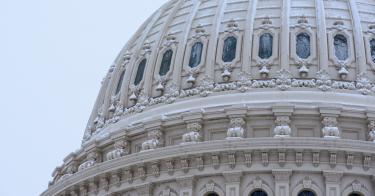The COVID-19 epidemic has demonstrated that excessive regulation is bad for public health.
Regulatory barriers blocked access to telehealth services, hampered accelerated distribution of masks and disinfectants, and threatened to delay vaccine development. This object lesson in regulatory risk should engender support for permanent reforms that would better protect public health and revive the economy.
Many of the nation’s foundational regulatory statutes were enacted a half-century ago, when municipal sewer systems emptied billions of gallons of raw sewage into rivers, cars ran on leaded gas, and the rotary dial was considered high tech. Much of today’s regulatory apparatus is thus a relic of this bygone era, and systemic reforms are sorely needed.
It is rather telling that none of the 454 agencies listed in the Federal Register tracks regulatory costs either cumulatively or in the aggregate. Some studies estimate that compliance costs the private sector an estimated $2 trillion annually. The paperwork burden alone now requires 11.6 billion hours annually, at a cost to the private sector of $149.8 billion.
The expansion of regulation illustrates a disturbing shift in power from Congress to regulatory bureaucracies. As noted by Ohio State University professor Christopher Walker, the 114th Congress passed 329 public laws totaling about 3,000 pages in the Statutes at Large. In the same two years, federal agencies promulgated more than 7,000 final rules comprising about 80,000 pages in the Federal Register.
The bigger the regulatory state has grown, the more essential political influence has become, leading to cronyism and corruption. Economic power and political power reinforce one another—just as they did when the Medicis ruled Florence and Tuscany in the 15th century. This is not the limited government of America’s Founding, its constitutional framework, or its republican ideals.
The potential benefits of regulatory reform are numerous and well documented. The White House Council of Economic Advisers, for example, blames excessive regulation for stunting gross domestic product growth for decades. An abundance of scholarship also documents a direct correlation between income and health. Simply put, squandering resources on regulatory overkill, strangling investment and innovation through unnecessary restraints, endangers livelihoods and lives.
While a burden for all, overregulation harms low-income families and fixed-income seniors the most, because the costs translate to higher consumer prices that exhaust a relatively larger share of their household budgets. Moreover, excessive spending on fashionable causes and hypothetical threats consumes resources that could be better spent remedying the actual environmental risks in low-income communities, such as contaminated drinking water and toxic soils.
Reform need not be tangled in partisanship. The rapid growth of regulation should be a concern for all, and there are a multitude of measured reforms to address the problems at hand. The goal is not to arbitrarily reduce the number of rules. Instead, the goal is to ensure that each regulation is thoroughly assessed for necessity and effectiveness, and that policymakers are held accountable for the impacts.
All three branches of government share the blame for excessive regulation, and action by all three is necessary to achieve meaningful reform.
The president’s authority to modify regulation is limited; the White House cannot countermand regulatory directives from Congress. For its part, Congress evades accountability by crafting ambiguous statutory language that fills court dockets. The lawsuits enable judges to write law rather than interpret law.
It is not enough to simply reshuffle the rulemaking process. The nation must restore rulemaking to Congress, eradicate the cronyism that distorts policymaking, subject independent agencies to regulatory review, and strengthen standards of cost-benefit analyses—among other reforms.
Regardless of the 2020 election outcome, unnecessary regulation will continue to plague the country and inhibit the nation’s economic recovery from the COVID-19 lockdown. It is essential to continue to repeal unnecessary regulations and to modernize the rulemaking process. Unless constrained, the regulatory state will extinguish America’s entrepreneurial spirit and the freedoms on which this nation was founded.
This piece originally appeared in the Washington Times



